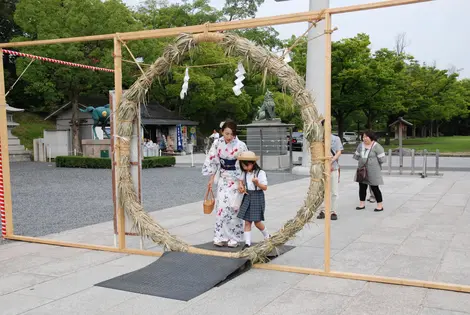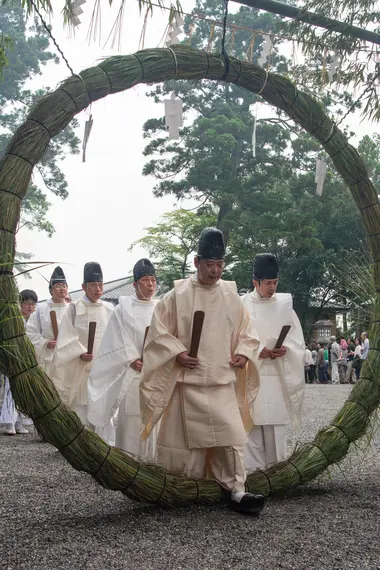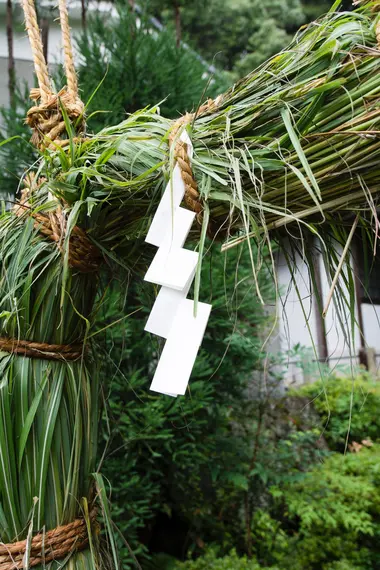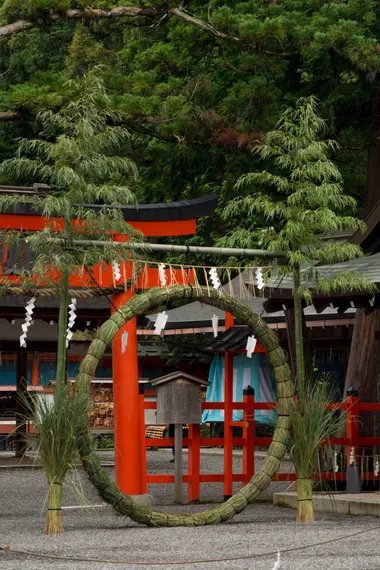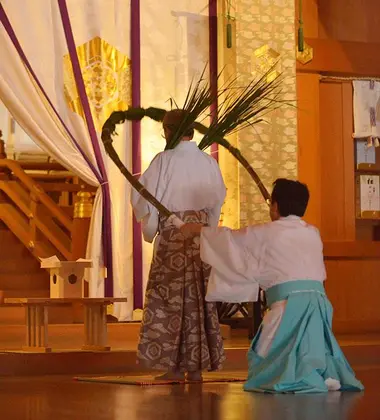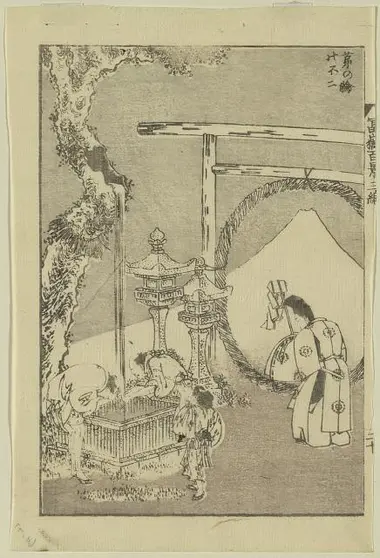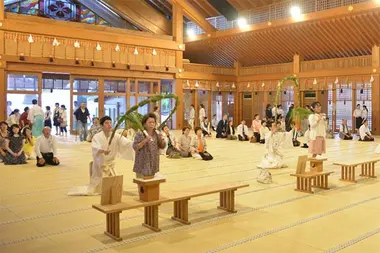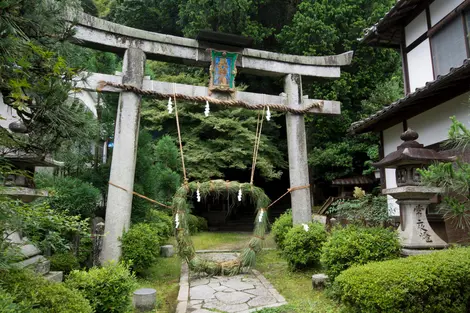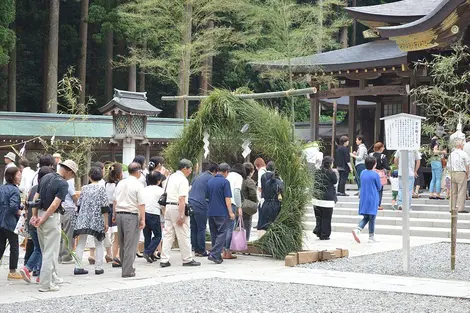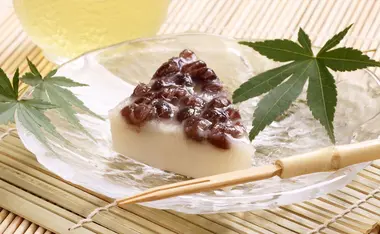Nagoshi no Harae 夏越大祓
The summer purification ceremony
In the heat of the Japanese summer, the faithful go to the sanctuary to cross the chinowa (large ring of woven grass). This passage through the chinowa is an act of purification allowing the elimination of faults, bad luck and illness. This ancestral Shinto ritual is called the Nagoshi no Harae .
Purification ritual
Nagoshi no Harae , ancestral rite of purification , takes place throughout the archipelago on the last day of June . ) but also to pray for the months to come. On this occasion, a chinowa is erected on the path leading to the sanctuary: under the torii ( shinto gate) or facing the haiden (ceremonial pavilion). These rings or gates are made of braided reeds of miscanthus and assembled with strips of paper. In some regions, the chinowa differs somewhat. At Ogami Shrine in Nara Prefecture, it is triple, with an additional cedar ring and pine ring. At the revered Izumo Taisha , the great shrine of Izumo, the chinowa is not round but U-shaped; thus being able to be held with both hands by the priest who makes it pass above the head of a faithful. Whatever its form, this crown of sacred grass remains the symbol of purification .
See also: The Daikoku to-e ceremony
During the Nagoshi no Harae , the priests cross the chinowa following a precise rite . While bowing, they pass through the ring then bypass it to the left to come back in front of it. They cross it again and circumvent it on the right then go back one last time through the chinowa . This done, the faithful are invited to do the same. In some shrines, priests perform the ritual while carrying a box containing small paper figures of people , called hitogata . These are then thrown into a river at the end of the Nogoshi no Harae.
Born of a legend, shaken by history
This purification ritual originates from an ancient legend in which Somin Shorai opened his door for the night to the god Susanoo no Mikoto , disguised as a beggar. To thank him, the deity offers him a ring of woven grass to protect him from epidemics . The ritual appears during the Nara period (710-794). It is celebrated at the imperial court and in Shinto shrines. the last day of the sixth and twelfth months of the lunar calendar. But the purification ceremony of the twelfth month disappears over time. That of the sixth month then takes on greater importance to officially become the Nagoshi no Harae . However, during the Muromachi period (1336-1573), the Ônin civil war (1467-1477) which raged throughout the archipelago put an end to the Shinto rite. Nevertheless, the rite remains alive in the population. It was not until 1871 that Emperor Meiji (1852-1912) restored the Nagoshi no Harae to the court; this one takes place in the gardens of the Imperial Palace . In June 2014, the Imperial Household Agency announced that the imperial ceremony, hitherto reserved for adult males of the family, was extended to the female gender due to the limited number of males within the lineage.
To read: Visit Tokyo in the footsteps of Emperor Meiji
In Kyoto
Although Nagoshi no harae is celebrated throughout the country, it is in Kyoto that the most famous ceremonies take place. The Kitano Tenmangu , which hosts ceremonies from June 25 to 30, has the largest chinowa in the city; a ring of more than 5 meters ! The Kamigamo-jinja and the Kifune-jinja offer hitogata which are then scattered in the river. Beautiful purification rituals also take place at Heian jingu and Nonomiya-jinja. Attending a Nagoshi noHarae in Kyoto is an opportunity to taste small Kyoto specialties, the minazuki . These triangle-shaped steamed cupcakes topped with adzuki beans , symbolizing evil spirits, are a tradition in Kyoto purification rituals that it would be a shame to miss!
See also: Culinary specialties of Kansai
Address, timetable & access
Address
Phone
+81 (0)75-461-0005Timetable
From Kyoto station: Bus 50 or 101 to Kitano Tenmangu-mae From Kitano Hakubaichô station: 10 minutes on footAccess
9am-5pm (7am-9pm on the 25th of each month)Website
http://www.kitanotenmangu.or.jp/top_en.php


